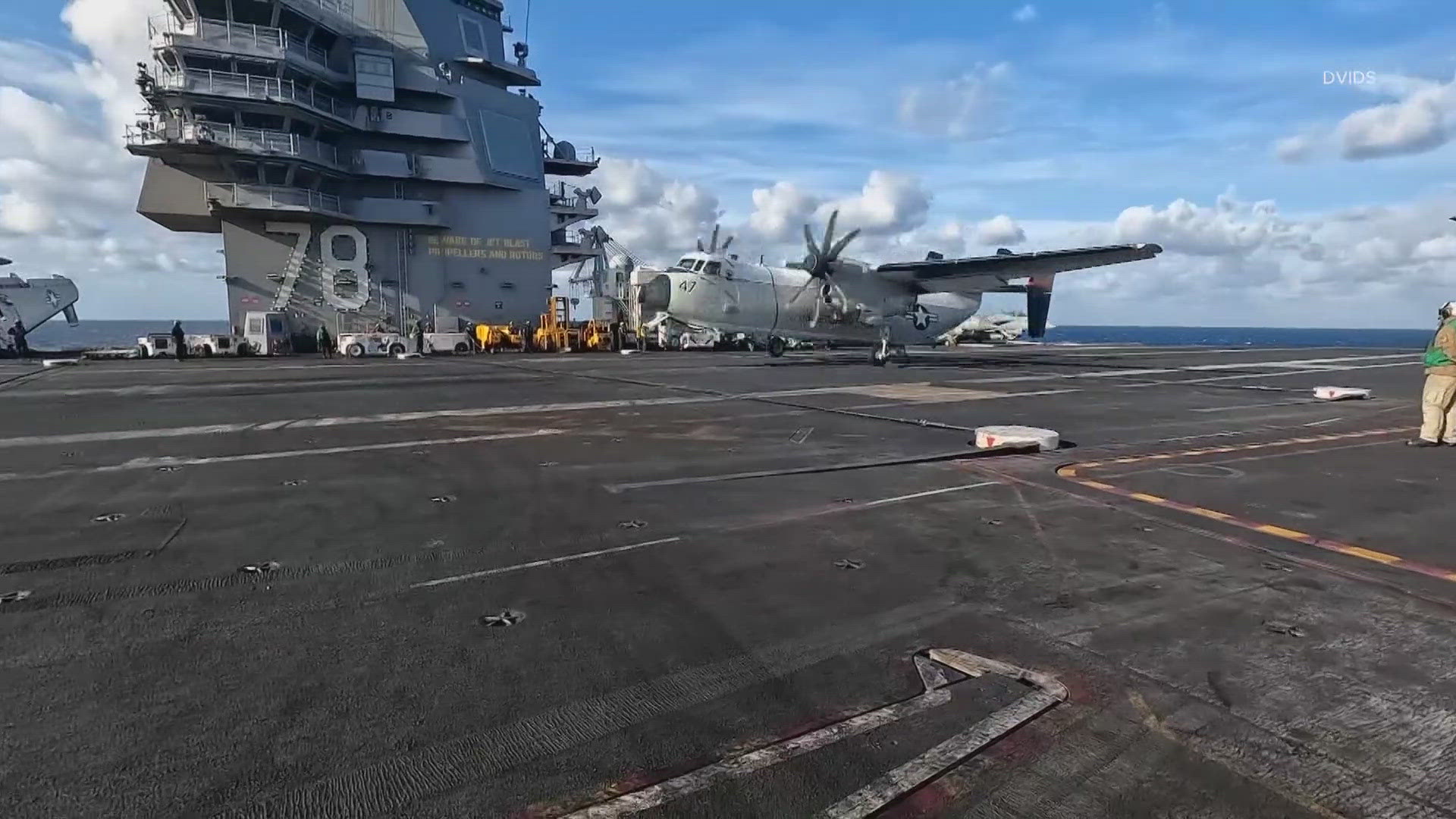NORFOLK, Va. — The USS Gerald R. Ford is the newest, largest and most sophisticated nuclear-powered aircraft carrier in the U.S. Navy Fleet, and 10 Tampa Bay’s Aaron Parseghian was invited aboard to see daily operations and how hometown heroes who hail from Tampa Bay play a role to support the Navy’s overall mission.
The flight in
We weren’t told the precise location of where the carrier was underway as sailors prepped for deployment. Estimates had the carrier a couple hundred miles off the coast of North Carolina.
Our safety briefing took place at the airport on Naval Station Norfolk. Crew members strapped us up with LPs (life preservers) helmets, ear muffs and goggles and headed out to the plane.
We got loaded in the back of a C-2 Greyhound a cargo aircraft that brings passengers, mail and high-priority cargo between carriers and bases.

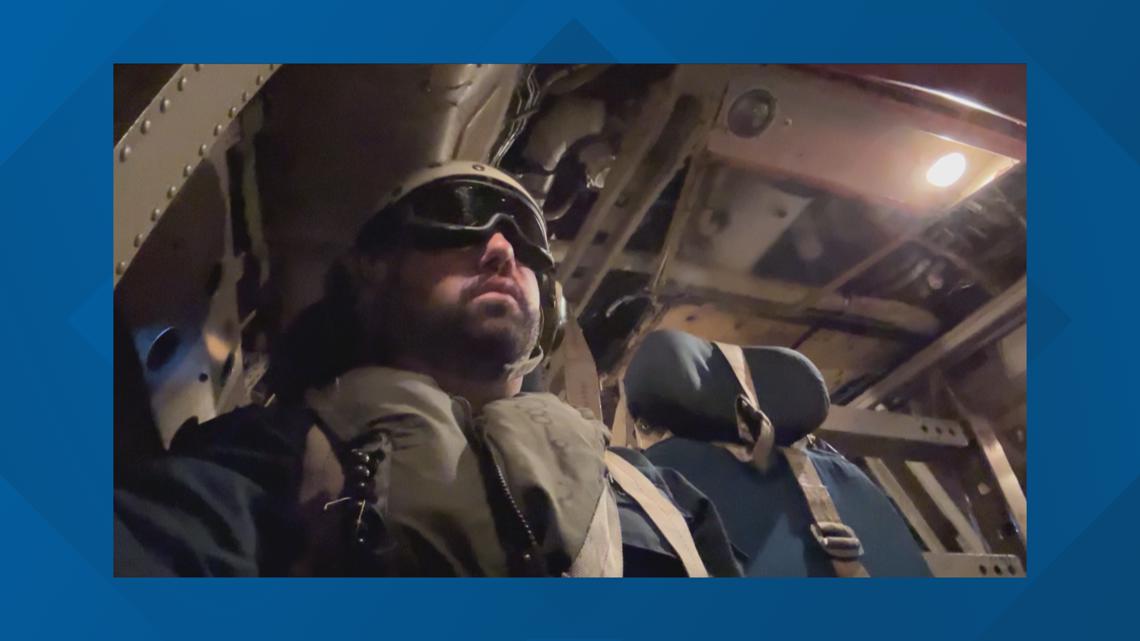
The roughly one-hour flight was dark, loud and smooth until we approached the carrier, where we braced for one of the coolest parts of the embark.
We conducted a trap landing, going from 105 mph to 0 in roughly two seconds as pilots successfully snagged the cable while hitting the flight deck.

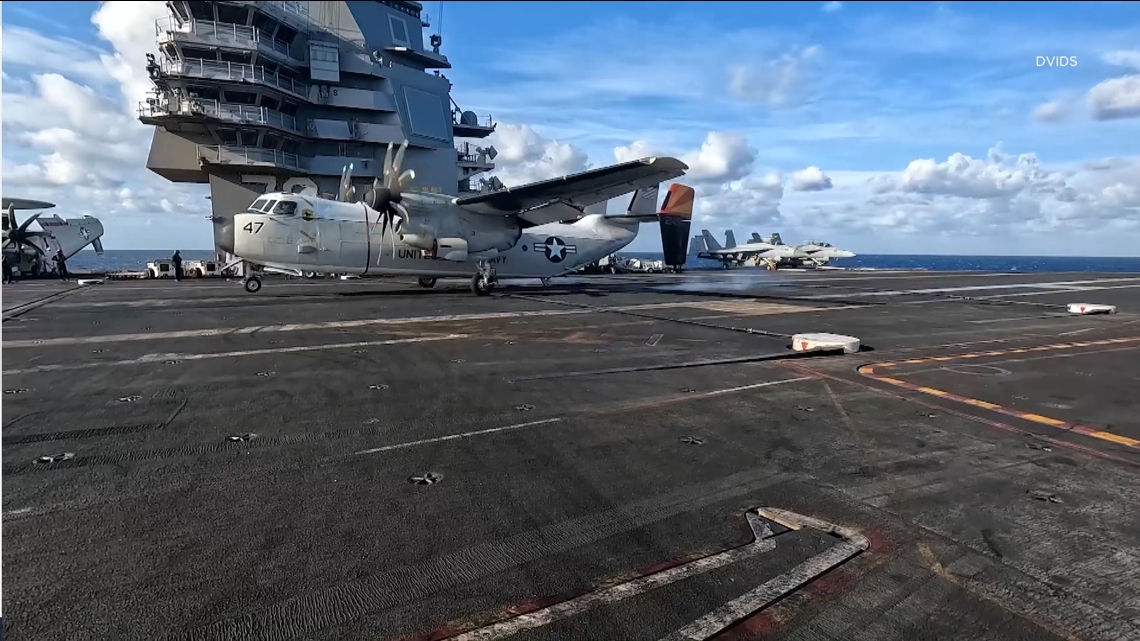
As we came to a stop, the cargo door opened unveiling the open water and the flight deck of the glorious USS Gerald R. Ford
Flight operations
Work aboard the Navy’s most lethal platform in the fleet centers around Flight operations. A lot of which you’ve seen semi-accurately in the hit "Top Gun" movies.
The pageantry of crews in team-colored shirts waving pilots along, the speed and sound of F/A-18 Super Hornets catapulting off — the only thing that’s missing is the fog lifting off the deck.
It’s because the Ford is the first carrier to not have steam-powered catapults, instead using electromagnetic force.
As fighter pilots take off and land every minute, flight deck control helps taxi aircraft around, while those on the bridge or tower steer the ship and flight deck and work as air traffic control.

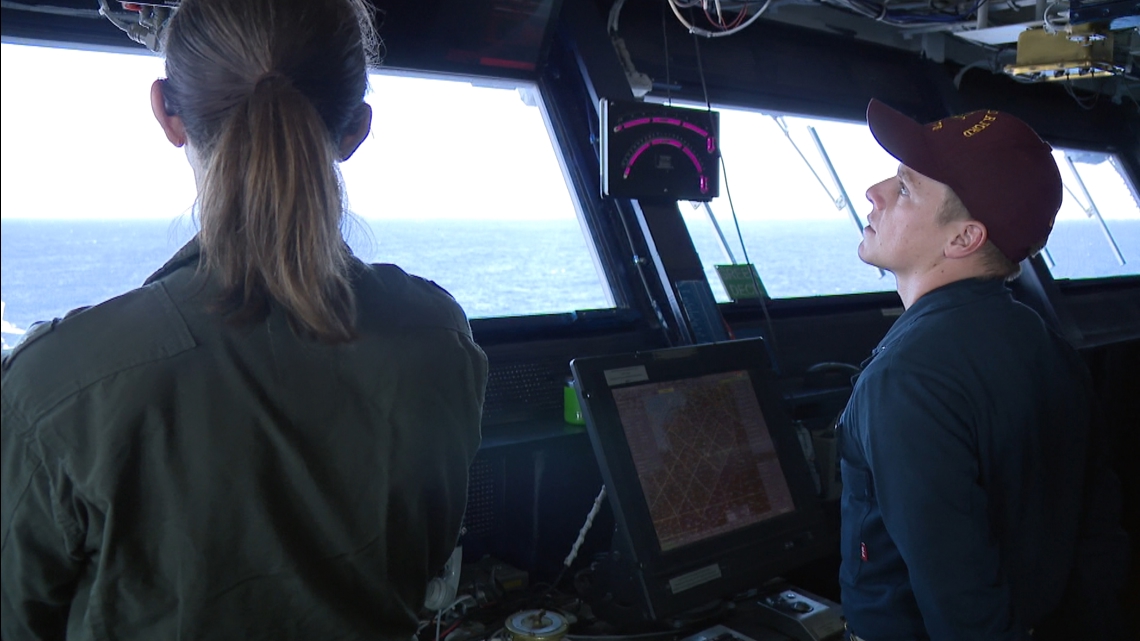
"We're launching and recovering jets pretty much every minute,” Lt. Commander Joseph Ryan, the ship’s assistant navigator, said.
“We've got the electromagnetic catapults and wire system, which replaces the steam of the old systems. It's all about technological advancements making the ship more ready for the future fight,” Ryan added.

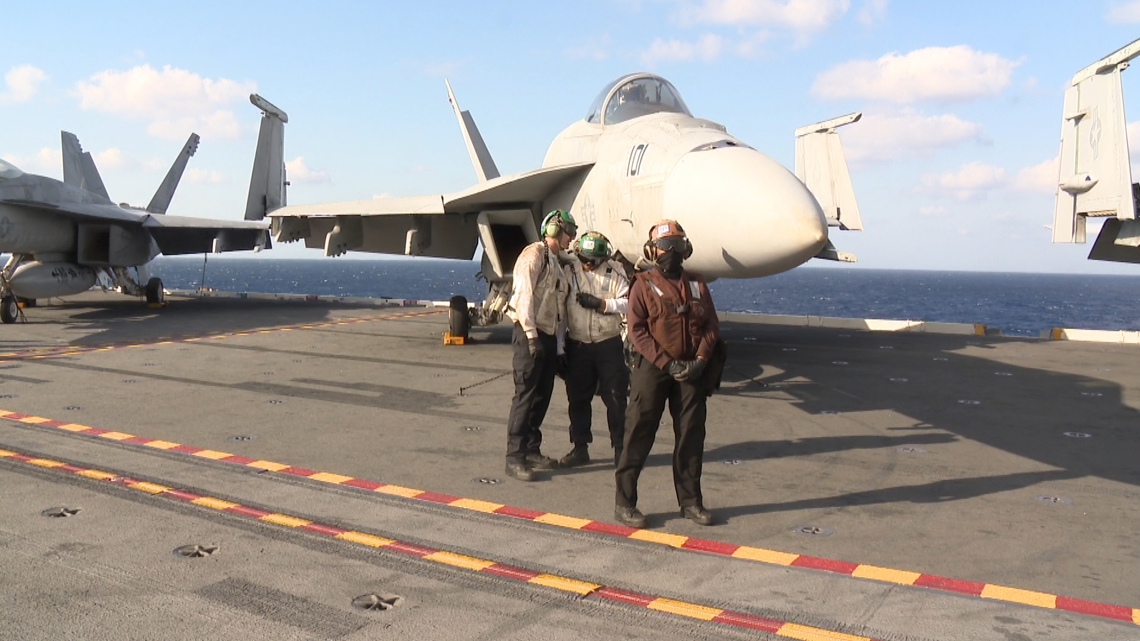
It’s cohesive teamwork that makes sure it all goes off without a hitch. For Lakeland native Blaze Moyeda, it never gets old to watch.
“The normal stuff that I see on a day-to-day basis. Some people say, like, 'Oh man, it's really awesome,' and I get to see it every day,” Moyeda, an aviation structural engineer, said.
The city on the sea
While flight operations are what everything centers around, all 5000 or so people and sailors aboard the carrier play a unique role in what is essentially a floating city on the sea.
Down in the hangar, crews perform routine and corrective maintenance on aircraft supporting missions around the world.

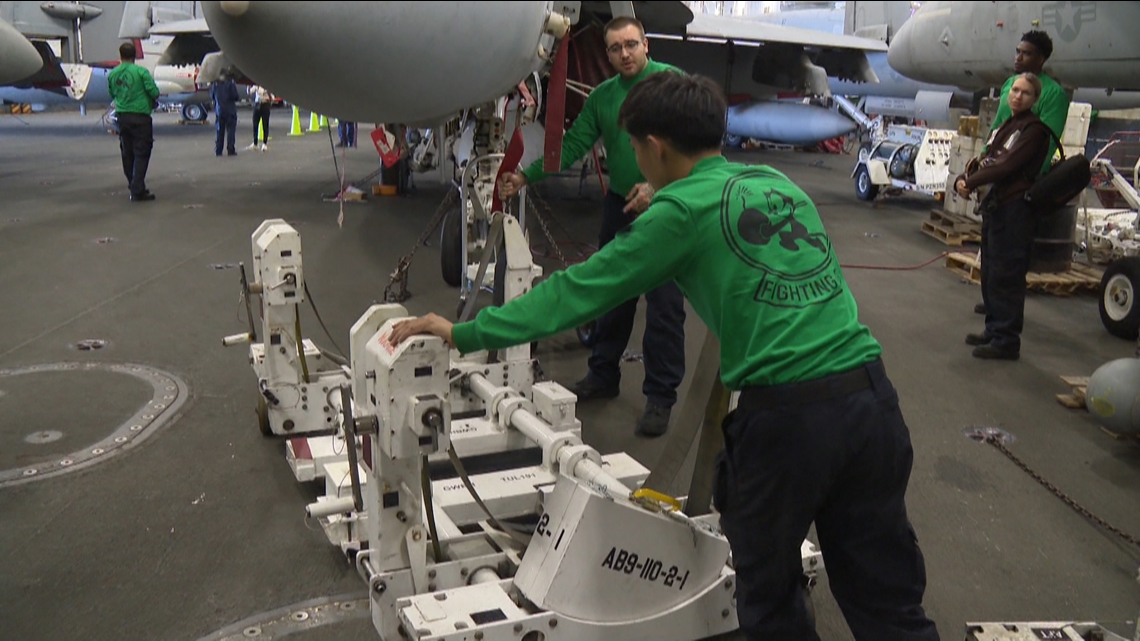
“If you really think about the mechanics in all of the moving parts that it takes to power a nuclear-powered aircraft carrier, it's absolutely astounding. It's nothing short of a miracle,” Public Affairs Officer LTJG. David Vasquez said.
Vasquez grew up in Pinellas Park, joining the Navy after years of working in political communications.
“I think it gives for my family a sense of service, truly a calling to be able to help serve the country,” Vasquez added.
It’s a calling for so many aboard, like Chief Petty Officer Wiky Damont, who’s served 18 years in the Navy.
“I’m proud alumni of Howard W. Blake High School, Yellow Jackets, best high school in the state of Florida,” Damont, an aviation ordnanceman, said.
“I'm leading at least 15 sailors in daily maintenance of these weapons elevators. We're just here to support squadrons moving ammunition up and down the flight deck and throughout the magazines,” he explained.
Damont says the opportunities the Navy gave him changed his life, and he credits his friend Xavier Williams for giving him the push to enlist.
“The Navy gave me, like, great leadership skills, allowed me to work with different backgrounds from all over the world. Just kind of just really found myself in what I was really good at,” he added.
From the hangar to the galley where sailors get their pick of what to eat and drink, every part of the ship stays busy while crews are underway working 12-hour shifts.
“We are staffed 24 hours a day,” Commander Kristina O’Connor, senior medical officer, said.
O’Connor, a former track star at USF, is the top doc on board, running what is essentially the ship's hospital.
“We have all the different departments that you would have in a normal clinic, from immunizations to basic readiness and acute care clinic. We also have the capabilities of a hospital,” she explained.
Aside from work, there are other things keeping sailors busy while on deployments that can last up to a year.
Starlink internet gives a chance for them to connect with friends and family back home, game rooms and gyms are a place to take a load off and there’s even a Starbucks on board for a morning pick-me-up.

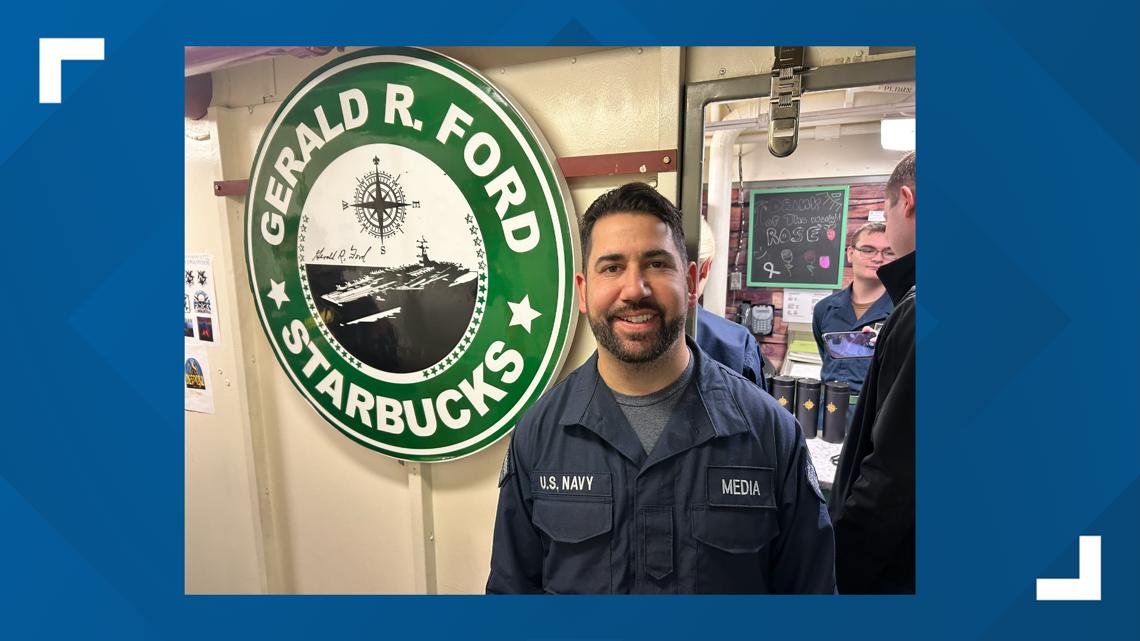
Then there’s Sage.
The yellow lab who’s celebrating her 4th birthday is the first dog to deploy with a ship’s crew, part of a pilot program to help comfort sailors.
We spent some time with Sage before hitting the berthing units, or sleeping quarters; bunks are stacked three high and it stays pitch black to allow comfortable sleeping for sailors on different shifts throughout the day.
The overall mission
The sum of all this hard work and time on sea readies the ship's crew for whatever comes their way, or wherever they’re sent to support the overall mission of the U.S. Navy.
“Keeping the world safe and just being able to be where we need to be, in case, you know, anything happens,” Damont said.
Maintaining freedom on the seas, projecting strength and protecting our country.

